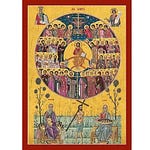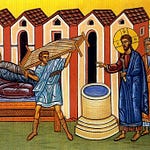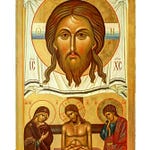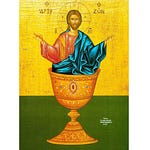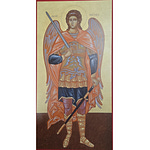A Lesson from the Gospel according to S. John 3.13
Jesus said, No one has ascended into heaven but he who descended from heaven, the Son of man. And as Moses lifted up the serpent in the wilderness, so must the Son of man be lifted up, that whoever believes in him may have eternal life. For God so loved the world that he gave his only Son, that whoever believes in him should not perish but have eternal life. For God sent the Son into the world, not to condemn the world, but that the world might be saved through him. He who believes in him is not condemned; he who does not believe is condemned already, because he has not believed in the name of the only Son of God. And this is the judgment, that the light has come into the world, and men loved darkness rather than light, because their deeds were evil. For every one who does evil hates the light, and does not come to the light, lest his deeds should be exposed. But he who does what is true comes to the light, that it may be clearly seen that his deeds have been wrought in God.
A Lesson a Gospel Homily by the Ven. S. Bede
The Book of Numbers tells that the people of Israel were wearied in the desert from their long journeying and exertion, and murmured against the Lord and Moses, and so the Lord sent fiery serpents in among them. When they cried out to Moses because of their wounds and the death of many of them, and he prayed for them, the Lord ordered him to make a bronze serpent and set it up as a sign. He said, “Whoever is bitten and looks at it will live,” and so it happened. The wounds caused by the fiery serpent are the poisonous enticements of the vices, which afflict the soul and bring about its spiritual death. The people murmuring against the Lord, and stricken by the serpents’ bites, provide an excellent instance of how one may recognize from the results of an external scourge what a great calamity a person might suffer inwardly by murmuring. The raising up of the bronze serpent (when those who were stricken beheld it, they were cured) is our Redeemer’s suffering on the Cross, for only by faith in Him is the kingdom of death and sin overcome. The sins which drag down soul and body to destruction at the same time are appropriately represented by the serpents, not only because they were fiery and poisonous and artful at bringing about death, but also because our first parents were led into sin by a serpent. And just as those who looked at the bronze serpent which had been lifted up as a sign were cured at that time from temporal death and the wounds which the serpents’ bites had caused, so too those who look at the mystery of the Lord’s Passion by believing, confessing, and sincerely imitating it are saved for ever from every death they have incurred by sinning in mind and body.
If you find this edifying, please consider (if you haven’t already) becoming a paid subscriber. Your support goes directly to supporting the ministry of Akenside Institute for English Spirituality, a project I started 12 years ago to help to rebuild the Anglican tradition.



